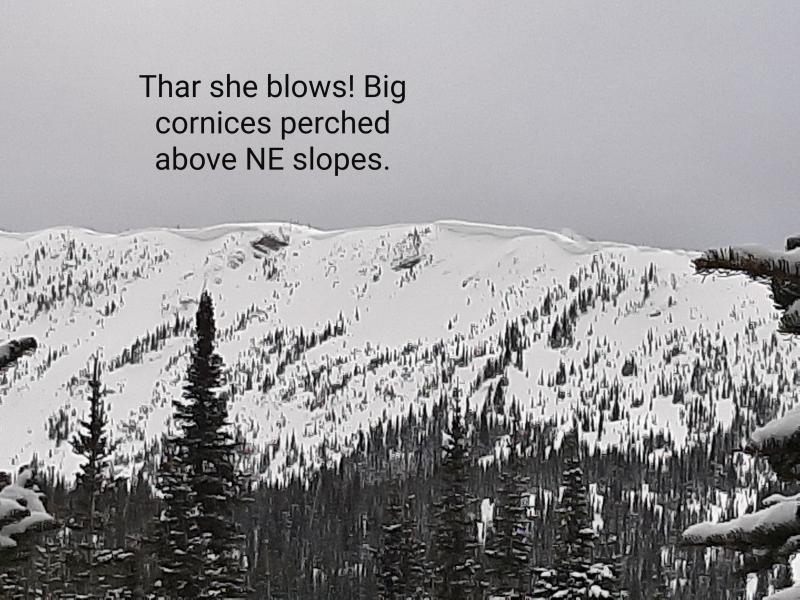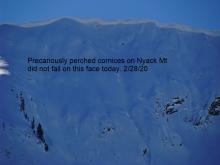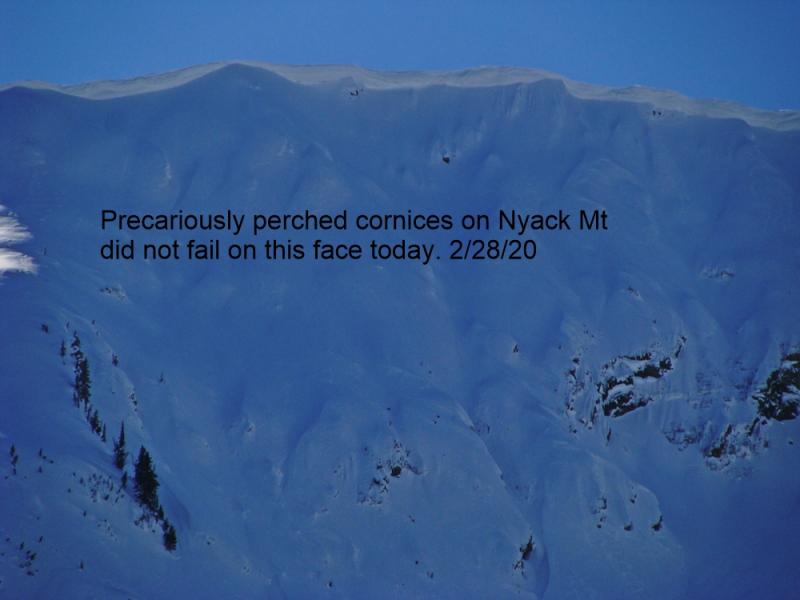| Sunday | Sunday Night | Monday | |
|---|---|---|---|
| Cloud Cover: | Mostly sunny and warm | Mostly clear | Partly cloudy and warm. |
| Temperatures: | 43-54 deg. F. | 25-33 deg. F. | 46-58 deg. F. |
| Wind Direction: | W/SW | W/SW | SW |
| Wind Speed: | 5-10 gusts 15-20 | 7-8 gusts 18-20 | 10-17 gusts 21-30 |
| Snowfall: | 0 in. | 0 in. | 0 in. |
| Snow Line: |
Whitefish Range
Swan Range
Flathead Range and Glacier National Park
How to read the forecast
The hazard is MODERATE on sunny aspects and wind loaded slopes steeper than 35º. All other terrain has a LOW hazard. Above freezing temperatures and ample sunshine will increase wet snow hazard on sunny aspects as the day progresses. Lingering, reactive wind slabs exist in isolated areas, varying in thickness from 6 inches to 2 feet. Avoid sunny aspects in the afternoon when the surface snow becomes wet and evaluate wind loaded slopes before skiing or riding on them.

2. Moderate
?
Above 6500 ft.
1. Low
?
5000-6500 ft.
1. Low
?
3500-5000 ft.
- 1. Low
- 2. Moderate
- 3. Considerable
- 4. High
- 5. Extreme
-
Type ?
-
Aspect/Elevation ?
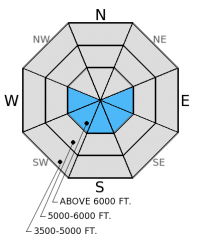
-
Likelihood ?CertainVery LikelyLikelyPossible
 Unlikely
Unlikely -
Size ?HistoricVery LargeLargeSmall

Above freezing temperatures are expected to continue today with out the partial cloud cover we had yesterday. As the day progresses and the sun heats the snow surface, the loose, wet avalanche hazard will rise. We could see small natural avalanche activity on steep, sunny slopes today. In some locations a foot or more of snow from the past two weeks sits atop a crust from mid-February. This crust provides a great bed surface for loose snow avalanches. Manage the loose snow avalanche hazard by moving into more shaded areas in the afternoon or when the surface snow becomes wet. Good indicators that the snow is becoming unstable are roller-balls and pin wheels forming steep slopes.
-
Type ?
-
Aspect/Elevation ?
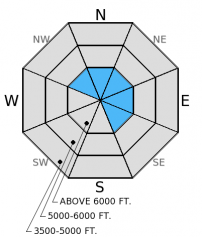
-
Likelihood ?CertainVery LikelyLikelyPossible
 Unlikely
Unlikely -
Size ?HistoricVery LargeLargeSmall

Wind slabs formed over the past week are fairly thin, particularly in the Whitefish Range. These slabs have been observed up to 2 feet thick farther east in the Flathead Range and in the Swan Range. In some areas they are still quite reactive due to the slick surface (mid-February crust) and weak snow they were formed on. Managing the wind slab problem is fairly simple as they are small, easy to identify, and isolated to areas near ridgelines and crossloaded features like rock outcrops and gullies. Evaluate wind loaded slopes carefully and avoid consequential terrain with recent wind drifted snow.
-
Type ?
-
Aspect/Elevation ?
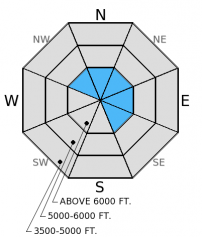
-
Likelihood ?CertainVery LikelyLikelyPossible
 Unlikely
Unlikely -
Size ?HistoricVery LargeLargeSmall

With abundant sunshine and another day of well above freezing temperatures, we could see large cornices weaken and potentially fail. The snow pack is generally stable so a cornice fall is unlikely to trigger a deeper avalanche, but large cornices tumbling down the hill are still dangerous. Avoid traveling below cornices especially in the heat of the day. Also, give them a wide margin while traveling above as they can pull back farther than expected. Several glide cracks have been observed in the Whitefish and Swan Ranges. With warm temperatures continuing, these slopes should be avoided due to the unpredictable nature of glide avalanche failure.
The surface hoar/facets above the late January crust (the persistent slab problem) has been taken off of the problem list. We have not observed or received reports of an avalanche on this layer in nearly a month. This does not mean it is not a concern. Triggering an avalanche on this layer is unlikely, but not impossible. This layer still exists in spotty locations throughout the advisory area, and still fractures and propagates in isolated locations. It is still important to dig into the snowpack and identify this layer about 2-2.5 feet deep and perform a stability test like the extended column test to determine its reactivity. Avoid steep, rocky areas with a shallow snowpack where you are more likely to trigger an avalanche on this layer.
The wind slabs we found yesterday in the Swan Range were not quite as reactive as we observed on Friday in the Whitefish Range (video,photo), but a lot thicker. We traveled in the Lost Johnny drainage and on Strawberry Mountain where we found 24-28 inch thick wind slabs that were isolated to ridge lines and saddles. It took hard force to propagate a fracture in these slabs in extended column tests. Stability tests did not produce any other fractures in the snow pack. We noted roller ball activity beginning in the late afternoon on steep, sunny slopes and numerous glide cracks (photo).
Skiers in the Flathead Range yesterday found variable surface snow conditions and wet snow that became unstable on sunny aspects (observation).
Yesterday most of the local weather stations and SNOTEL sites above 6000 feet recorded temperatures in the low to mid-40s. As the clouds move out this morning, the temperature is expected to climb even higher today. Currently, mountain temperatures range from 21º-33º F and winds are blowing out of the west/southwest 5-10 mph. Today should see mostly sunny skies with temperatures in the mountains reaching the upper-40s. Winds will blow out of the west and southwest at 5-15 mph with gusts to 25 mph on high ridgelines.
| 0600 temperature: | 21-33 deg. F. |
| Max. temperature in the last 24 hours: | 37-45 deg. F. |
| Average wind direction during the last 24 hours: | W/SW |
| Average wind speed during the last 24 hours: | 5-15 mph |
| Maximum wind gust in the last 24 hours: | 15-25 mph |
| New snowfall in the last 24 hours: | 0 inches |
| Total snow depth: | 64-90 inches |
This advisory applies only to backcountry areas outside established ski area boundaries. This advisory describes general avalanche conditions and local variations always occur. This advisory expires at midnight on the posted day unless otherwise noted. The information in this advisory is provided by the USDA Forest Service who is solely responsible for its content.
























